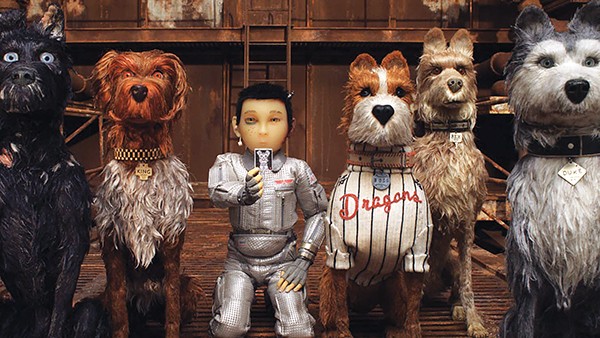When you’re a film critic, you have to watch a lot of crap. It’s right there in the job description: I watch crap so you don’t have to. But what I don’t think I was prepared for was the sheer shoddiness of some of the films I see. I’m not talking about the kind of corner-cutting you see on low-budget pictures. I’m talking about poor craftsmanship in studio blockbusters. You’d think if you’re spending $200 million on a production, you would at least care enough to make it look good on screen. It’s disheartening to see stuff like Transformers: The Last Knight, where the special effects finale included terrible composite jobs and recycled stock footage. If they don’t care about their product, why should I?
That’s one of the reasons critics like Wes Anderson. His work can be truly great, like The Royal Tennenbaums or Moonrise Kingdom; or divisive, like The Life Aquatic with Steve Zissou or head-scratchingly misguided, like The Darjeeling Limited. But at least it’s never shoddy. Even when it doesn’t work, you can tell he and his team are paying attention to detail, making each individual shot look the best it can.
I guess what I’m saying is, in my reviews, even if you fail, you get points for honestly trying — and deductions for cynical, advertising-driven cash grabs that are directly proportional to the size of your budget. So when I see a film that is both as lovingly crafted and as emotionally resonant as Isle of Dogs, I’m gonna praise it like it was Medicare for All.

Wes Anderson celebrates his love for dogs and Japanese culture in Isle of Dogs.
This film is about two things: Anderson’s love of dogs, and his love of Japanese culture. Isle of Dogs‘ prologue is a Noh drama about “a little samurai” lovingly staged in flawless stop motion, complete with black-clad stagehands the audience is trained to ignore. Right from the beginning, Anderson uses layers and layers of artifice stacked together to reach for something higher. But his little curlicues, which have in the past threatened to overwhelm the bigger picture, are here focused on the story. The Noh bit sets up the history of the powerful, cat-loving Kobayashi family before flashing forward to the near future, where Mayor Kobayashi (Kunichi Nomura) rules fictional Megasaki City. The mayor uses the cover of a dog flu epidemic to banish all of the city’s dogs to Trash Island, which prompts his ward Atari (Koyu Rankin) to steal an airplane and fly to rescue his beloved pet, Spots (Liev Schreiber).
Atari’s landing skills are not great, so he quickly finds himself needing a rescue. Fortunately, he’s found by a pack of heroic dogs, voiced by Anderson regulars: Chief (Bryan Cranston), Rex (Edward Norton), King (Bob Balaban), Boss (Bill Murray), and Duke (Jeff Goldblum). They take the “Little Pilot” under their paws and help him navigate treacherous Trash Island in search of his lost dog. Meanwhile, Professor Watanabe (Akira Ito) and his assistant Yoko Ono (voiced by the actual Yoko Ono) search for a cure to dog flu, and an American exchange student named Tracy (Greta Gerwig) uses her school newspaper to unseat Mayor Kobayashi.
Anderson careens from one incredible set piece to another. Professor Watanabe’s lab comes right out of a Toho production like The Mysterians. The director uses Kobayashi’s brief visit to a sumo match as an excuse to create a fully realized arena tableau that echoes Raging Bull. The island where most of the adventure plays out provides endlessly varied environments, from orderly stacks of cubes made from compacted trash to a slimy toxic wasteland. Our canine heroes hide out in a hut made of discarded saki bottles that provide a luminous and colorful background. Unlike the finely polished (and criminally overlooked) Kubo and the Two Strings, Anderson foregrounds the stop motion process — like King Kong; the dogs’ fur is in constant motion, disturbed by the animator’s unseen fingers. But there are also some spectacular effects, such as when characters eyes well with artificial tears.
Anderson loves nothing more than making self-contained worlds that play by their own internal rules. But there’s an underlying melancholy to his work. His orderly creations are a way to provide escape from the chaos and pain of the real world, if only for a couple of hours. Isle of Dogs is twee as you would expect from Anderson making a movie about dogs, but the underlying hurt is much closer to the surface here than in an idyl like Moonrise Kingdom, and that gives it a fairy-tale vibe. This is a kids movie that knows the kids can handle the darkness better than the grown ups.